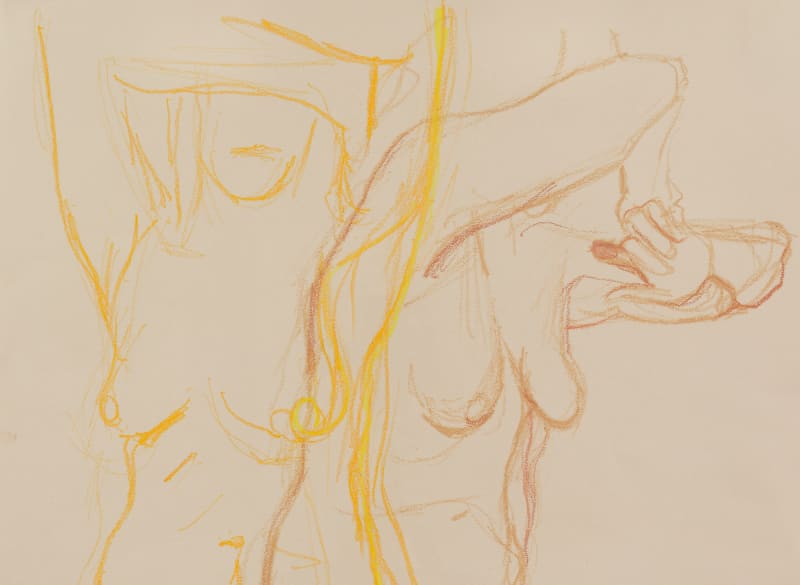Lorraine O'Grady and Joan Semmel included in the group exhibition My Silences Had Not Protected Me organized by Luci Benni and Emma Nuzzo at Fort Gansevoort, New York, NY.
Press Release
In collaboration with For Freedoms, a platform for creative civic engagement, discourse, and direct action for artists, Fort Gansevoort presents My Silences Had Not Protected Me, organized by Lucy Beni and Emma Nuzzo. This exhibition unites a collection of artists who together represent the multidimensional intricacies of sexuality and its inherent relationship to power. My Silences Had Not Protected Me challenges the viewer to confront the ways in which societal narratives of sexuality are formed and communicated. Central to this exhibition is the idea of power: how sexuality can be both an object of abuse by the powerful and a source of power for those who wield it.
The pieces included in the exhibition share For Freedoms’ conviction that people shape the cultural systems that in turn mold their own lives. My Silences Had Not Protected Me is a resistance to the rigid, disparaging, and marketed monolith of feminine identity that influences the way women are taught and expected to exist within their own physical space - the body. It both confronts the humanity and freedom taken from us through sexual violence and patriarchal systems of oppression, as well as celebrates and embraces sexuality as it is realized and performed by women.
The artists’ works featured function at the intersection of process and identity, where the diversity of medium mimics the range of their experienced reality. The various subjects, genres, and expressions challenge notions of domesticity, objectivity, childhood fantasies of womanhood, and the pursuit of freedom. In her photographic series Burial Pyramid, Ana Mendieta examines the inherent, subtle, and structural weight of patriarchal systems of power and their violent effect upon the female body. The suite of five color photographs at first do not appear overtly constructed. However, upon further examination, the viewer realizes Mendieta has buried herself in the pastoral scene, in which she uncovers her nude figure. Mendieta stages her own suffocation to comment on the breathlessness certain bodies experience in quotidian life due to societal structures of oppression.
Slow Fade to Black (Lena Horne), a photograph by Carrie Mae Weems, captures a central, alluring female figure; hands grazing her hips and hair, she wears a shoulder-baring gown that emphasizes her statuesque curves. She is glamorized, foreshadowing the makings of an icon through her staging, nearly contrapposto, and yet her image is blurry -- it is unclear whether she is coming into or out of focus -- which only serves to dull, but not completely undermine, her allure. Weems’ iconic oeuvre is known for examining the relationship between power and the body. Slow Fade to Black (Lena Horne) is no exception; Weems depicts her subject, African American artist and civil rights activist Lena Horne, as seemingly fading into the background. In an image that Horne once gleaned cultural power through her sexuality, Weems depicts her power as fleeting and fading from our collective memory.
Marilyn Minter contributes a video work, My Cuntry Tis of Thee, in which she weaponizes female sexuality to deliver wordplays criticizing the patriarchal systems that seek to control those who wield it. Women stand behind a frosted surface, melting and carving political proclamations into the ice to reveal themselves and a brightly colored background juxtaposing red and blue. Minter lends us her brand of haunting sexuality in her striking imagery and ominous sounds, bewitching the viewer. The video ends on a call to action: writer, curator and activist Kimberly Drew handwrites ‘OUR CUNT-RY NEEDS YOU’. Minter is overt in her message that the perennial struggle for women’s rights in the United States is of immediate importance.
Throughout My Silences Had Not Protected Me, For Freedoms and Fort Gansevoort engender interaction between viewer and object to promote a nuanced examination of the embodied experience of femaleness. In bringing together a diverse range of artistic expression and voices, the exhibition strives to expose the multifaceted and complex experiences that color female sexuality. We want the freedom to not be reduced, to exist fully and in plurality; a limitless being. This exhibition is a celebration, a chorus of women representing themselves and their stories through their own voices. As Audre Lorde put it, “My silences had not protected me. Your silence will not protect you.”
Lorraine O'Grady, Joan Semmel
Fort Gansevoort
November 8, 2018
